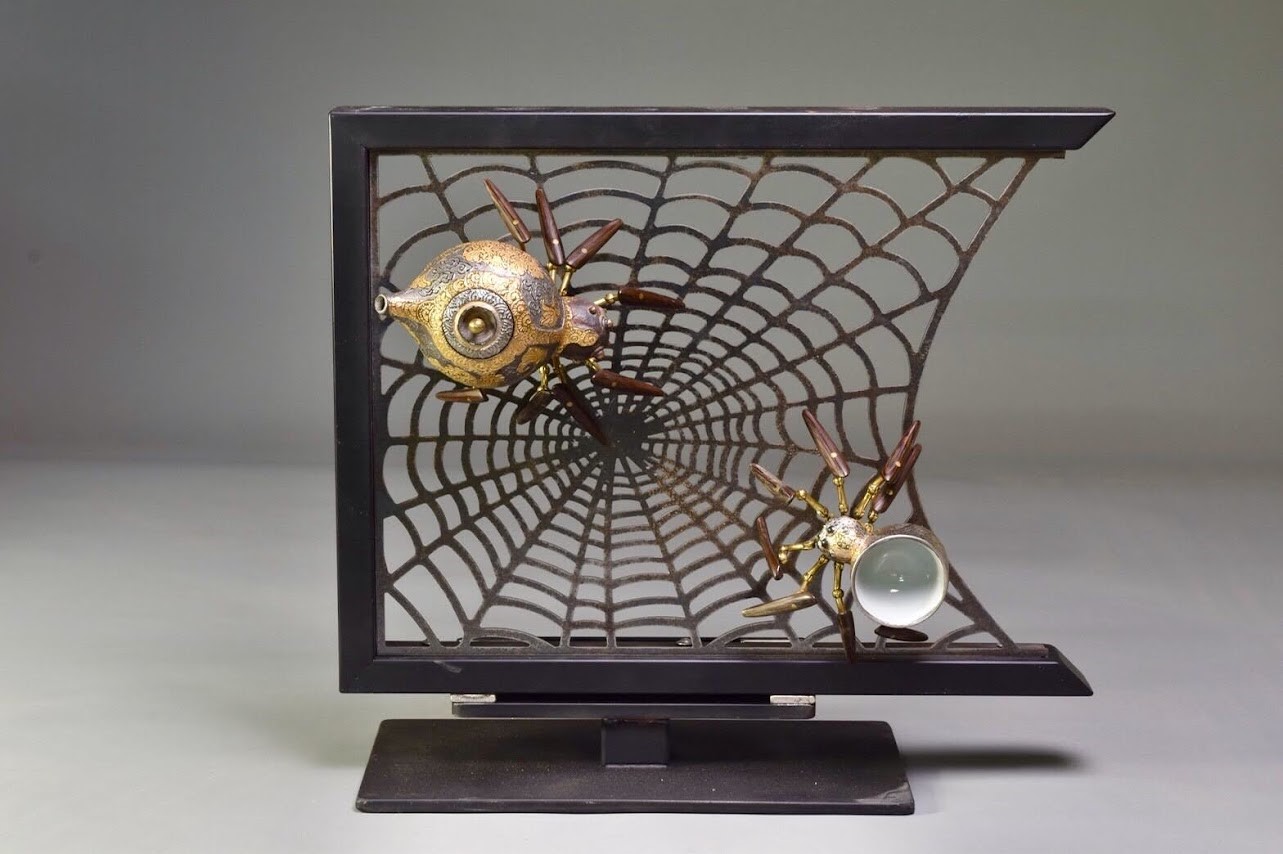

知足喜福-蜘蛛壺組 Contentment and Joy – Spider Tea Pot Set
作者 許旭倫 Author Hsu Hsu-lun
媒材 陶、鐵、黃銅、鐵刀木 Medium Ceramic, Iron, Copper, Kassod Tree
年份 2021 Year 2021
尺寸 40 x 18 x 40 cm Size 40 x 18 x 40 cm
作品賞析 Artwork Appreciation
尼采曾隱喻蜘蛛,描繪理性系統之下,所有事物均被收納其下、各有其屬。
蜘蛛在中國民間是一吉祥的象徵;民間俗稱蜘蛛為「喜蛛」;唐朝「壁錢」是在牆上畫一蜘蛛從網上垂吊而下圖案,寓意「喜從天降」。八足也是其特徵,以蜘蛛為茶壺象徵滿足長樂,喜從天降,八方雲集。蜘蛛壺底部安裝磁鐵,藉由磁力吸附於蛛網上。
Nietzsche uses the metaphor of the spider to suggest that everything forms part of a rational system.
The spider is an auspicious symbol in Chinese folk culture. In the Tang Dynasty, the “wall spider” is a picture on the wall where a spider is hung from a cobweb, symbolizing “happiness from the heavens.” With its eight legs, the spider as the tea pot symbolizes contentment, lasting joy, and happiness from heaven. The spider pot features a magnet on the bottom so that it can be attached to the cobweb.